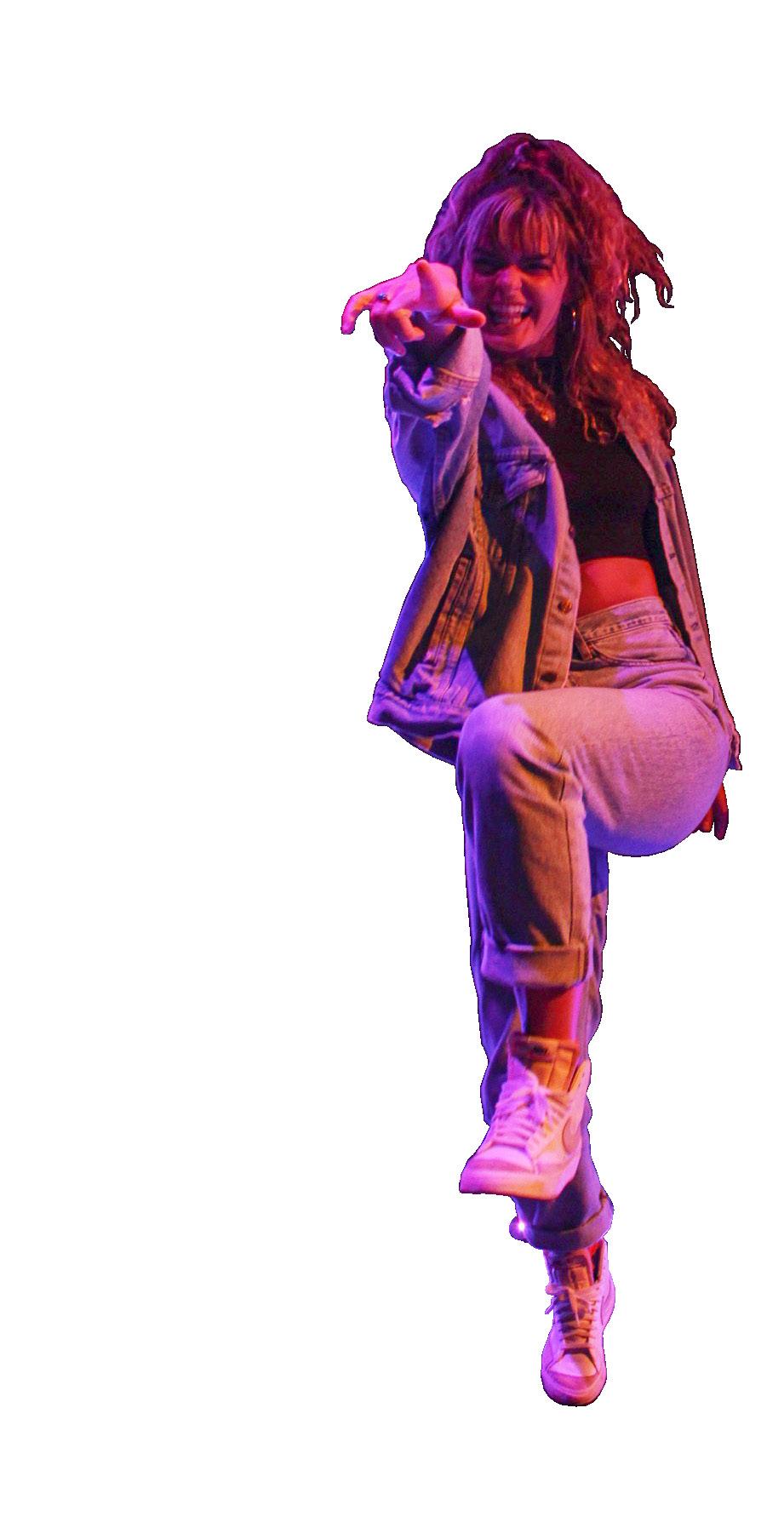
2 minute read
Back to the Future
Back Back to the Future:
Written by Caleb Rocha & Nina Carbone Layout & Artwork by Prutha Chavan
Advertisement
The Fashion Trend Cycle
“Wait a minute, Doc. Are you telling me you built a time machine?” Not quite. And there’s no DeLorean either. But if you looked in our closets, you might think we had one stashed under tarp out back. I’m sure many of you can relate. If you opened your closet right now, would you find an abundance of denim? Maybe windbreakers? How about chunky, white sneakers or baggy sweaters? Now, if you looked in your parents’ high-school bin in your attic, you might find yourself looking at a lot of the same staples. Coincidence? Of course not. For the vast majority of fashion history, trends like these have seen a regular 20 or 40-year popularity cycle. So, yeah, they’re back now. The question is, why?
The fashion trend cycle works in increments of 20 and 40 years, which is why we see the consistent and regular return of trends. For example, clothing items like flannel were popular in both the ‘90s and the 2010s: a 20-year gap. Similarly, ‘80s fashion trends are making a comeback now, 40 years later, along with trends from the turn of the century. Each time a fashion trend resurfaces, it comes back with a modern twist. These trends reappear primarily because of nostalgia, both parental and personal. The 40-year-old trends can be attributed to parental influence—parents share media from their childhood (think Back to the Future) which leads to their children emulating those trends. 20-year-old trends are




Future Back to the Future:
The Fashion Trend Cycle
Models: Caleb Rocha, Mia Kroeger, Nina Carbone Photographer: Gil Roberts

more personal. A 30-year-old individual might look fondly at their early years, and begin to dress as their childhood idols once did. So why is ‘80s fashion so big right now? Again, Back to the Future lends a perfect example. Most members of Gen
Z have had their parents say something like: “You need to watch [Insert ‘80s movie here], it’s a classic!” After watching the movie, the child often idolizes the aesthetic of the characters surrounding someone like Marty McFly. But there is more behind this current trend resurgence due to the rise of thrift culture in Gen Z fashion. This generation cares more about the environmental state of the world, causing them to appreciate sustainable fashion. It is not uncommon for a child to stumble upon a piece in a thrift store and find that it looks just like something from their mother’s favorite movie. The combination of nostalgia and thrift culture has, and will continue to cause current trends to support the trend cycle. So whatever you do, do not throw out your once trendy clothes, because we promise you, they will be back.














